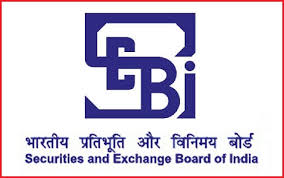 Despite stock market volatility and a negative return of 9.4 per cent from the Sensex, 2015-16 saw good participation in new equity issuances and companies raised a total of Rs 48,952 crore through various instruments, says a report.
Despite stock market volatility and a negative return of 9.4 per cent from the Sensex, 2015-16 saw good participation in new equity issuances and companies raised a total of Rs 48,952 crore through various instruments, says a report.
“In financial year 2015-16, a total of Rs 48,952 crore was raised through various equity market instruments including initial public offers, qualified institutional placements, follow-on public offers and offers-for-sale,” a report by Centrum Wealth Research said today.
This was, however, lower than Rs 58,801 crore raised in fiscal 2015.
IPOs garnered Rs 14,772 crore in fiscal 2016, a massive leap from Rs 2,769 crore raised in the previous fiscal.
Money raised through QIPs stood at Rs 14,438 crore, lower than Rs 29,102 crore in the last fiscal, but rights issues raised Rs 8,785 crore, a 30 per cent jump from Rs 6,750 crore in FY15.
Despite the turmoil, the BSE IPO index performed relatively better than the benchmark Sensex. In 2015-16 fiscal, the Sensex shed more than 9 per cent, while the BSE IPO index was down only 1.8 per cent.
“While the year was good in terms of quantum of money raised and out performance of the IPO index, it turned out to be a mixed bag in terms of individual stock performances,” the report titled ‘Performance of New Equity Issues in FY16’ said.
Shree Pushkar Chemicals was the biggest gainer with an over 100 per cent return from its offer price, followed by VRL Logistics which gained 81 per cent.
Dr Path Labs, Syngene and Manpasand Beverages were all up 45-65 per cent each. Amongst the key drags were MEP Infra, UFO Moviez, Quick Heal and Coffee Day, that were down 30-40 per cent each.
“Even though new equity issuances witnessed robust participation in FY16, the Indian IPO market had to go through a slump at the start of 2016. This was in line with global IPO activity, which saw a sharp drop in Q1, 2016 led by worldwide economic slowdown,” the report added.
On the future outlook, the report co-authored by Sweta Chawla and Siddhartha Khemka said, “Central banks across the world are likely to maintain an accommodative monetary policy through the year and that should help check global market volatility. Earnings are expected to show an improvement in the second half of the year.
“A lot will depend on monsoon though. An overall positive market sentiment will keep the interest alive in primary market issuances and we could see lot more money raising.”
Source: http://economictimes.indiatimes.com/articleshow/51648033.cms


